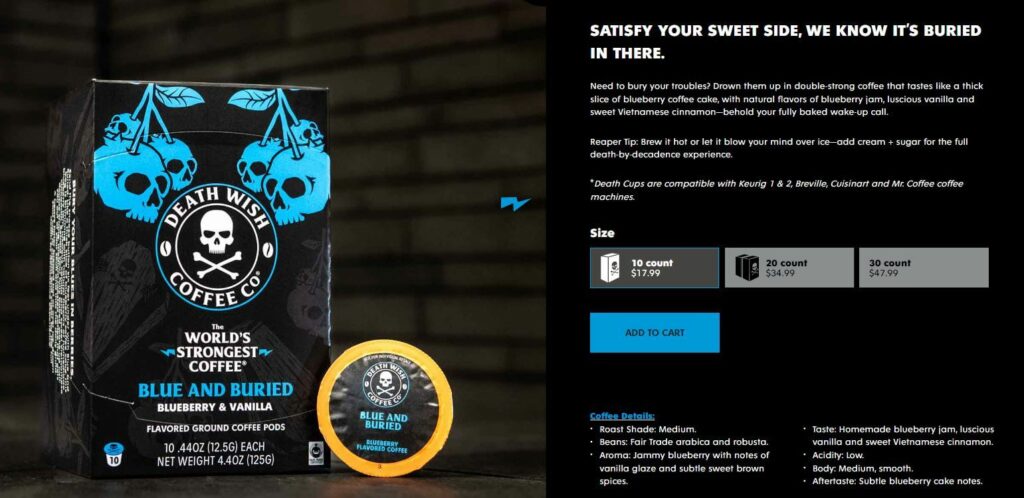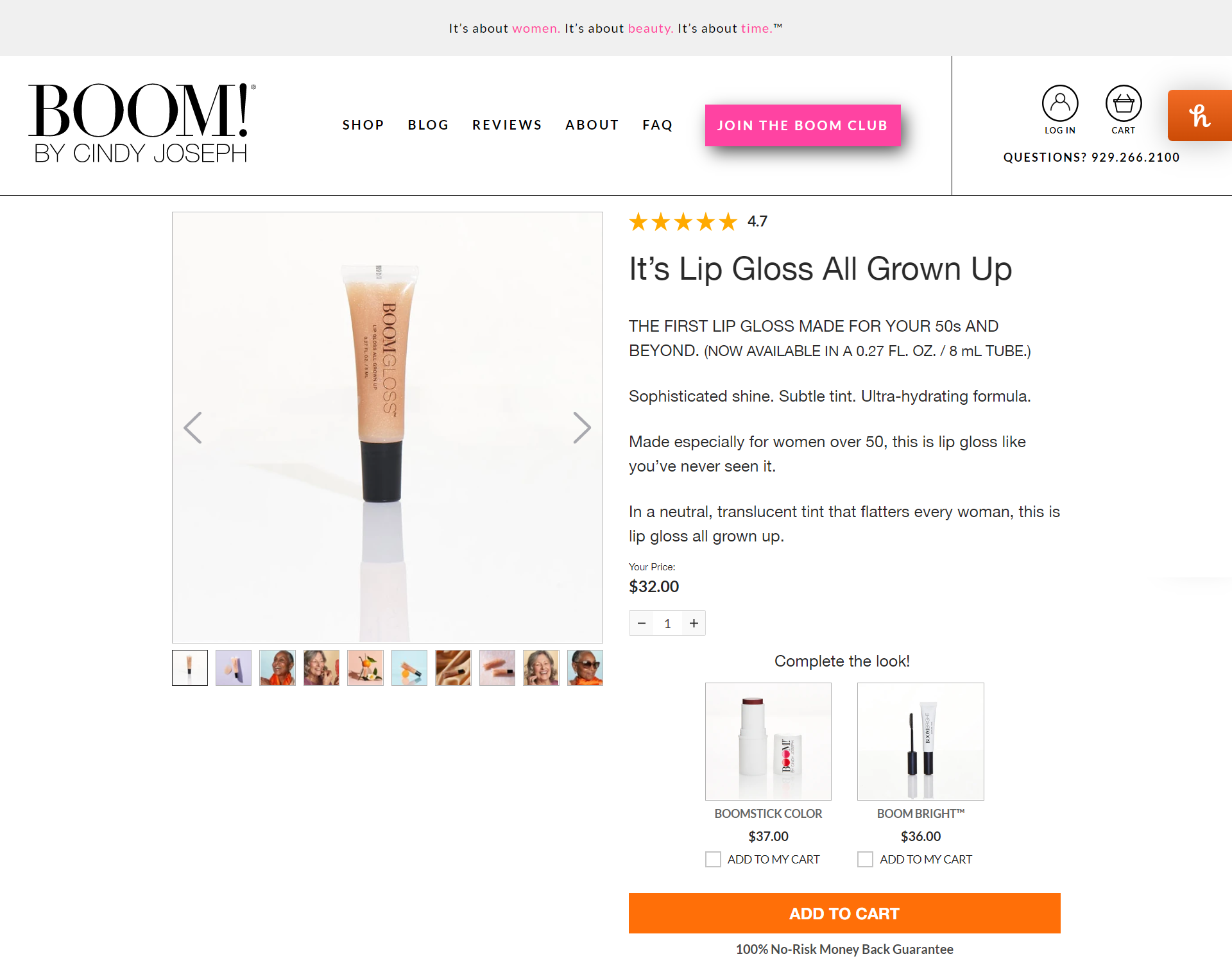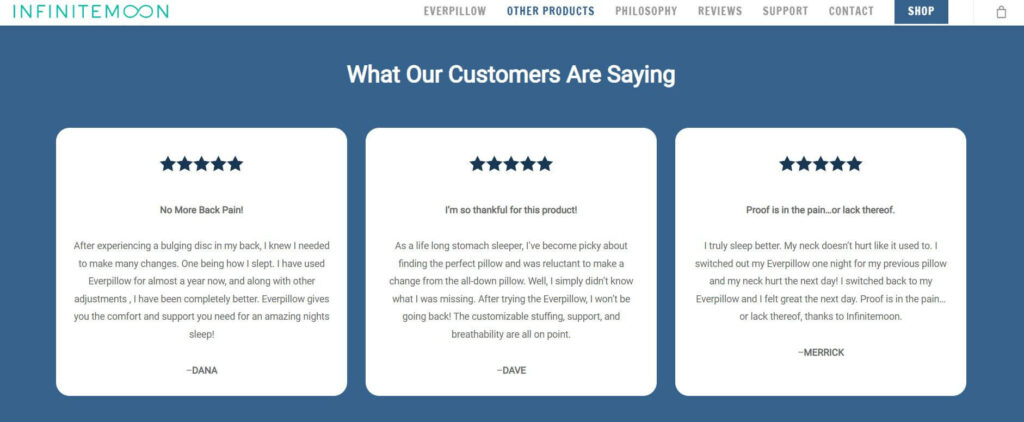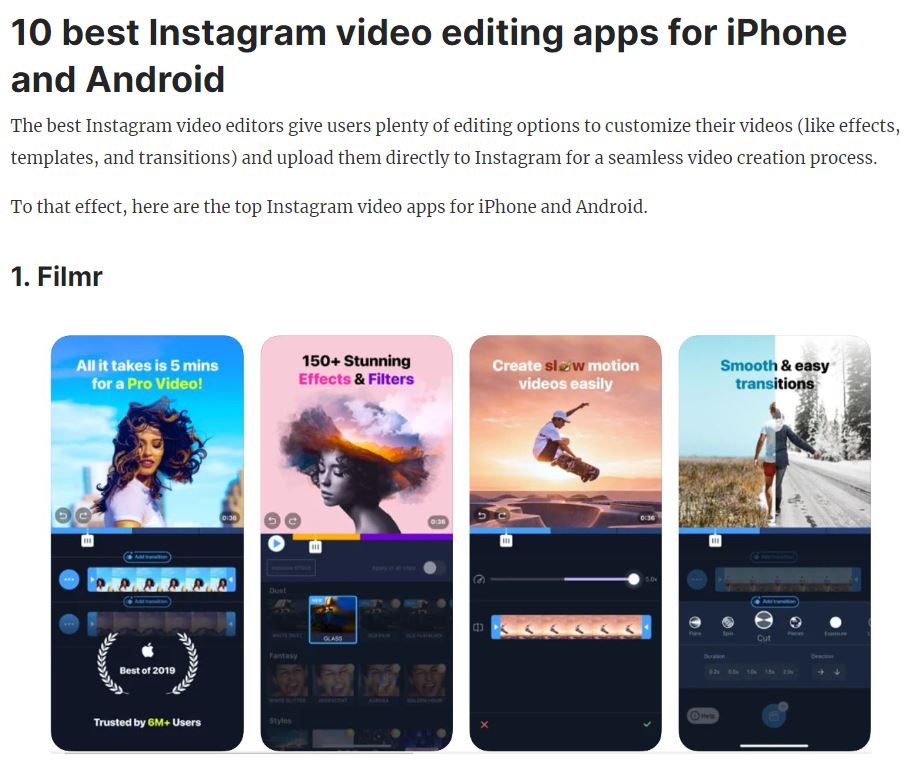Last Updated on
My last impulse purchase was something I said I’d never get.
(And yes, this is relevant to ecommerce content writing, so don’t skip this part.)
Here’s what happened.
My dog had just come inside from playing in the backyard and with her, she brought a smattering of pine needles, grass clippings, and bits of dead leaves.
Like clockwork, I lugged out our vacuum hose. It was the fourth time that day, and I knew it wouldn’t be the last.
In the back of my mind, I thought about that thing I said I’d never buy…
I was sooo tempted—it was only a quick Google search away.
“That’s it,” I mumbled to myself, “I’ve had enough.”
I opened my laptop and typed two words into the search bar: robot vacuum.
There were plenty to choose from—they all looked the same, they were all within the same price point, and they all (mostly) did the same thing.
Here’s the thing: I have no kids. I have a small home. I’m physically able to vacuum. I never thought I was the candidate for robot-anything.
Yet, fifteen minutes later, I had punched in my credit and was awaiting my spiffy new vacuum.
So, why did I end up dropping hundreds of dollars on something I initially said I was never going to buy?
And more importantly, how did I narrow down the one I wanted so fast?
Simple.
Bits of ecommerce content—like landing pages and product descriptions—persuaded me that one robot vacuum was my match made in heaven.
And with a little bit of strategy, you too can write ecommerce content that makes prospective buyers say “shut up and take my money.“
Why do ecommerce businesses need content?
Simply put, content marketing is an effective way to drive sales and leads.
Especially when you’re in a competitive niche.
Think back to my robot vacuum purchase.
Almost all vacuums were the same. But the one I purchased did a better job of selling itself to me.
In ecommerce, you don’t have the luxury of schmoozing your prospective buyers—your content has to wine and dine for you.
How to write ecommerce content
Although writing great content is a science, these these six steps will help you beef up your ecommerce content writing.
1. Nail down your unique selling proposition (USP)
A unique selling proposition—also known as a unique selling point—is what makes your product different (and much better) than your competitors.
An example of a USP is Death Wish Coffee which claims to be the world’s strongest coffee.

Identifying your USP makes it easier to stand out among your competitors.
2. Collect voice-of-customer (VOC)
VOC is the words and phrases your customers use to describe their pain points and desires. For example, if you sell candles, your customers may say things like:
- “I want a candle that makes my home smell nice”
- “I want a candle that looks pretty”
In your sales copy, you want to use the exact words and phrases your customers use time and time again. With our candle example, a header on the sales page (that uses VOC) could be: A candle that looks pretty and makes your home smell nice.
You might think that sounds boring, but clever headlines aren’t necessarily better. A highly-respected copy collogue of mine always says, “quirky-cute doesn’t sell,” meaning that funny or cute taglines may sound impressive, but they won’t necessarily drive home sales.
When you incorporate VOC into your copy, your prospects will feel connected to your message and will be more likely to convert.
To find VOC:
- Head into online forums—Reddit, Quora, Facebook groups, Slack channels—and read what your prospects are saying and how they talk. Jot down phrases that come up over and over again.
- Talk to your sales team and other customer-facing teams to see which phrases they hear customers say.
- Conduct customer interviews or surveys.
3. Outline your product’s benefits
Features tell, benefits sell. Customers want to know what problem of theirs your product solves. You do this by showcasing the benefits over the features.
For example, here are two fictitious header options for a web development company:
- Websites built with the GeneratePress WordPress theme (feature-heavy header)
- Lightning fast and responsive websites so you rank higher in Google (benefit-heavy header)
Number two is much more appealing—it focusses on the benefit rather than the feature.
Don’t you know where to start? First, make a list of key features of your product or service. Second, after each feature, ask a basic question of ‘so what?’. This will give you some ideas on how to turn features into benefits.
Remember that each benefit gives your potential buyers another reason to purchase your offering versus another.
4. Collect social proof
Social proof is a psychological phenomenon and an influence marketing technique. To increase conversion rates, you should be using social proof. Social proof can be:
- Testimonials
- Reviews
- Star ratings
- Social media presence
- Number of social media shares
- User-generated content
- Logos from established brands
Interestingly, 88% of consumers involve social proof in their online buying decision.
Don’t you know where to place social proof within your website design? The front page of your website is an excellent place to demonstrate your social proof. Another critical place for social proof on your site is on the sales page, specially right after a call-to-action or button.
If you’re still undecided, glance through your website as a visitor and see what kind of social proof you wish to see that will make you complete the purchase.
5. Start writing
After collecting the above information, it’s time to write your content. In the next section, we’ll learn about different types of ecommerce content so you have a better idea of how to write specific types of ecommerce content.
If you’re unsure how to format your copy, look to tried-and-tested formulas to help. A popular one is AIDA which stands for Attention, Interest, Desire, and Action.
6. Optimize for SEO (optional)
Ecommerce search engine optimization (SEO) is the process of making your online store more visible to search engines to drive organic traffic. When people search for a product or service that you offer, you want to rank as high as possible to generate more traffic to key pages.
Ecommerce SEO usually involves:
- writing click-worthy content titles
- improving your ecommerce site’s page speed
- enhancing your website architecture
- writing engaging content for product descriptions
- paying attention to internal link structure for a better user experience
- adding keywords to places like your pages, blog posts, and product descriptions
You don’t need to optimize everything for SEO. Plenty of my clients don’t want to optimize their sales pages for SEO because they plan to drive traffic to it via an email list, and don’t necessarily want cold traffic from search engines landing on the page.
However, I recommend optimizing product pages and product descriptions, and top of funnel content like blog posts.
If you want to start learning SEO, check out my free SEO training.
4 powerful types of content for ecommerce platforms
The type of content for an ecommerce site depends on your product or service, however, there are four common types of content that all ecommerce sites should focus on.
1. Product descriptions
One of the first point-of-contacts on your website for potential customers is the product descriptions.
A product description is a snippet of text that is featured near your product. This text will often provide details about the products that are helpful for shoppers and will include keywords that are important for search engine optimization (SEO).
Websites feature descriptions beside of below their products.
While writing descriptions:
- narrow in on the pain points of your product
- focus on the product benefits rather than the features
- add relevant long-tail keywords into your product description so it’s more likely to rank on Google and other search engines
Example
Boom by Cindy Joseph succinctly describes their product to their audience of women 50+ years old. Phrases like “sophisticated shine” and “ultra-hydrating formula” speak to the pain points and desires of mature women who want to wear a lip gloss that isn’t thick or drying.

2. Landing pages
A landing page—the page your visitors land on after they click a link—is what gives your website visitors an initial peek into what your business is all about. Think of it as a front door to your ecommerce business. It’s purpose is to trigger action of some sort, whether that’s to buy a product or sign up for your email list.
Good landing pages are concise—especially in the case of product or service pages—and lay out the value of your product.
Believe me, directness can be very refreshing for your audience who just wants to find a solution to whatever problem they face.
Below are some of my favorite tips for writing landing page copy:
- long copy isn’t necessarily better—write however much you need to sell your product. If you aren’t sure how much to write, use a tool like Hotjar to create heatmaps and see where users drop off your page.
- make your value proposition explicitly clear—what will your reader get if they follow through with your CTA?
- talk less about you and more about how your product impacts the reader
- use power words in your copy
- don’t hide any important information—make it easy for readers to get all their questions answered without clicking around (because most people won’t click around; they’ll just leave)
- include testimonials and social proof to convey trust
- include bucket brigades so the copy flows and is easier to read
Example

InfiniteMoon’s landing page clearly shows how reviews and testimonials can be used on a landing page to make a sale. On top of that, InfiniteMoon makes perfect use of the space above the fold, delivering its value proposition through a punchy headline and emotive hero shot.
3. Buying guides
When a customer searches for a product online, a buying guide can serve as a way to convince them to make a purchase. More specifically, the guide can convince them to buy from your brand over the competition.
Writing buying guides assists customers by providing helpful information about whatever you sell. Adding an effective buyer’s guide or two to your website will benefit your business and, when optimized for search, will also bring a steady stream of traffic to your site.
Plus, buying guides show that you care about your customers. Well-written guides can take the place of a customer service representative as they can answer questions and help customers compare possible alternatives.
By providing a valuable source of information for your potential and existing customers for free, you prove that you actually want to simplify the buying process for them. This helps to foster trust and brand loyalty.
Consider these tips while writing your next buying guide:
- keep it unbiased and neutral
- pay attention to the content structure so it’s easy for users to read (include screenshots, headers, and use short paragraphs for easy reading)
- include relevant links for so readers can click on the items they wish to purchase
Example

I wrote this piece for InVideo discussing 20 different Instagram video editing apps. Two of the apps I mentioned were InVideo’s own apps. The piece takes an unbiased look at different apps to help the reader choose the right one for themselves.
4. Ecommerce newsletter
Email marketing is still a significantly effective way for ecommerce websites to engage with their audience. In fact, 87% of marketing professionals listed email as one of their top free organic distribution channels.
An ecommerce email newsletter allows you to show your brand’s personality, helping distinguish you from your rivals. And much like meeting people in the real world, the more they get to know you, the more trust they’ll feel toward your brand.
Secondly, an email newsletter is a proven way for an ecommerce business to send tailored messages to new and existing customers. You can easily segment emails, create tailored messages, and dynamically change content based on the subscriber’s preferences.
Lastly, building an email list can drive traffic to your landing pages, product pages, category pages, and online shop.
Some of my tips for creating high-performing ecommerce newsletters:
- segment your list to create highly personalized content—50% of consumers say that personalization based on interest has persuaded them to purchase from a brand
- use clear product images or show people how your product can be used
- create a healthy mix of promotional and educational content (80% educational and 20% promotional is a good place to start); nobody wants their inbox overflowing with promotional emails
Example

Dynamite’s newsletter is a one-two punch. First, the content within the newsletter is highly valuable to the reader and teaches them about tonal dressing.
But more importantly, Dynamite features their own products as an easy way to dress tonally. The recipient gets to learn something new while also being advertised to in a very non-invasive way.
Time to sharpen your pencil and write content for your ecommerce website
Producing quality content is a mission-critical growth method for your ecommerce website. Content can create positive experiences for your potential customers and compel them to return for more!
If you’d like to pass the pencil to a pro, reach out to me and I can provide you with a quote.
This article may include affiliate links. As an Amazon Associate I earn from qualifying purchases.

Dana Nicole is an award-winning freelance writer for MarTech/SaaS who was rated one of the best SaaS writers by Software World. She specializes in writing engaging content that ranks high in search engines and has been featured in publications like Semrush, ConvertKit, and Hotjar.
Dana holds a Bachelor’s degree in Business Administration and has over 15 years of experience working alongside national brands in their marketing departments.
When Dana’s not working, you can find her dancing en pointe, cooking up new recipes, and exploring the great outdoors with her two big dogs.

